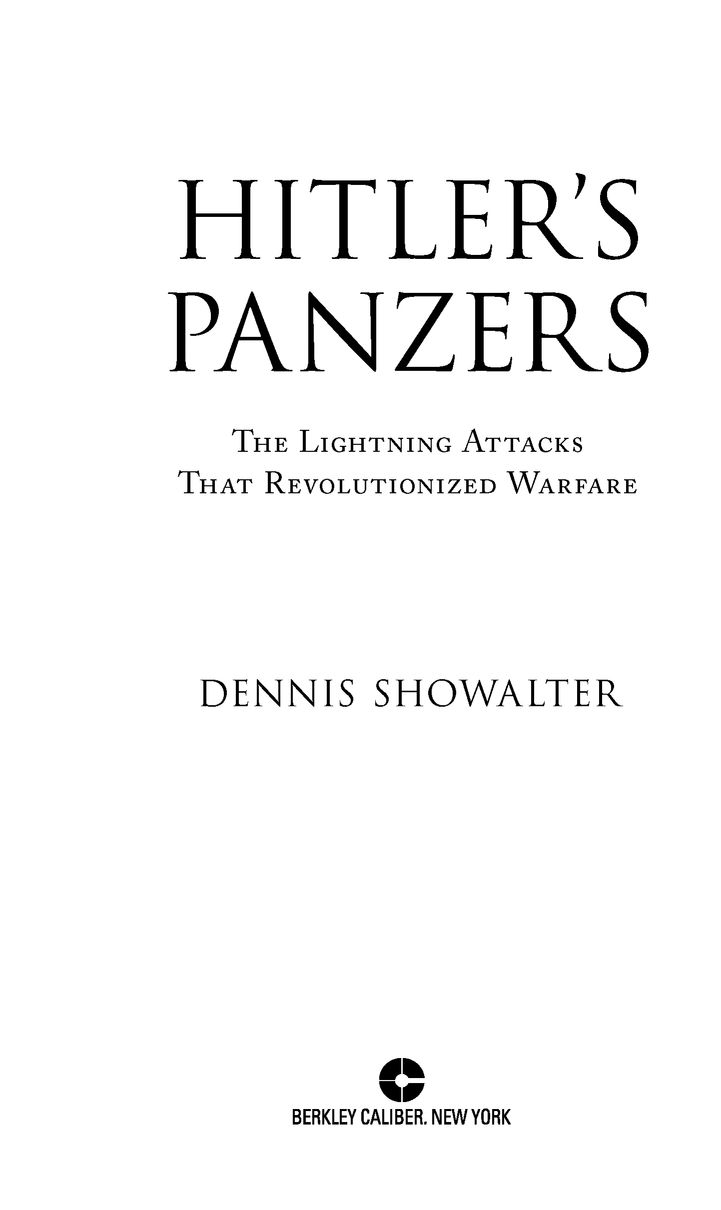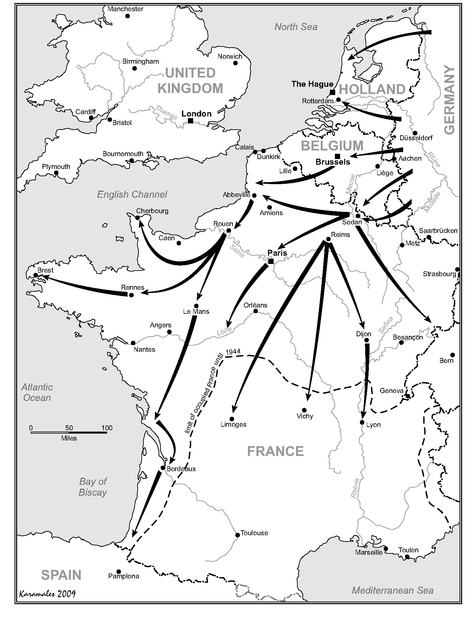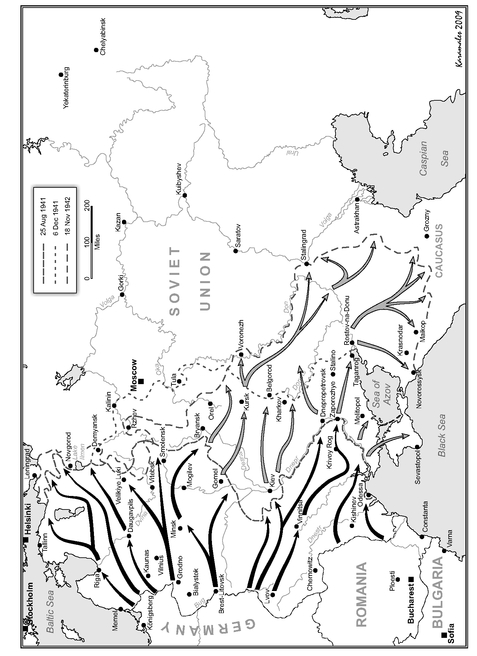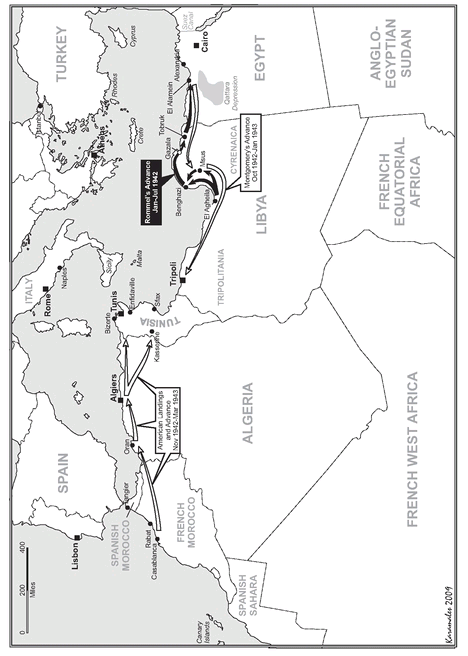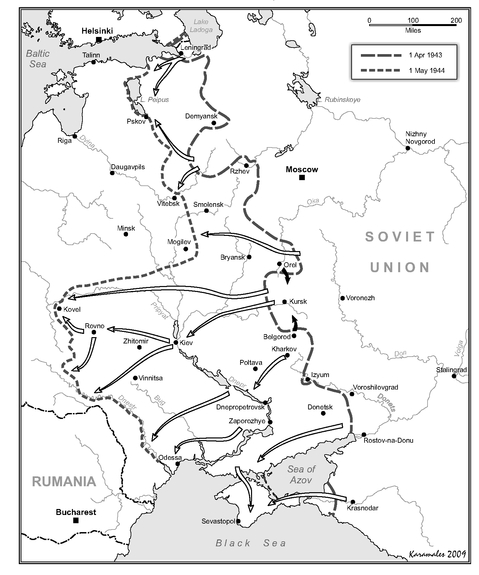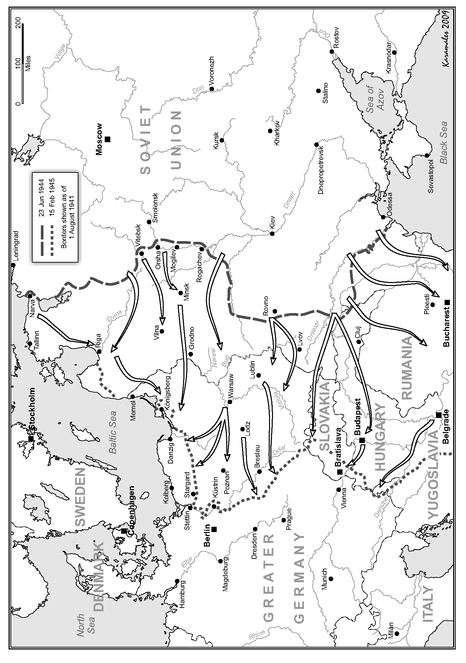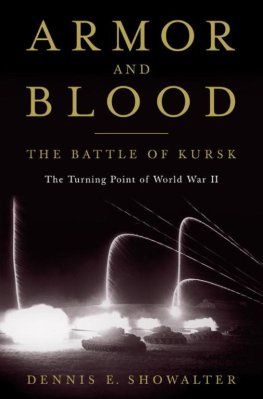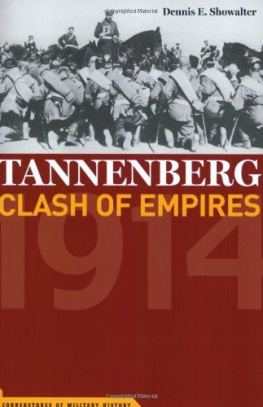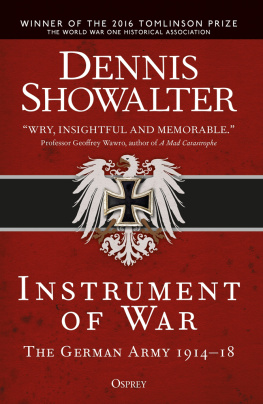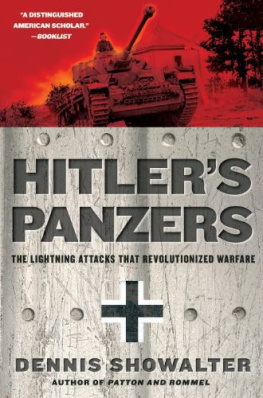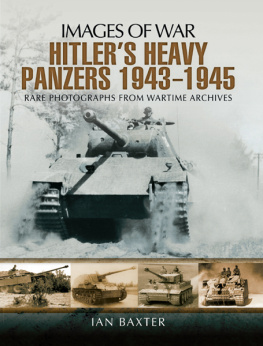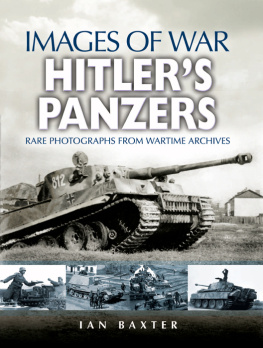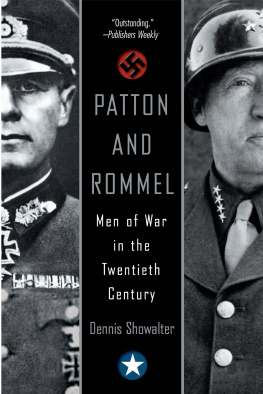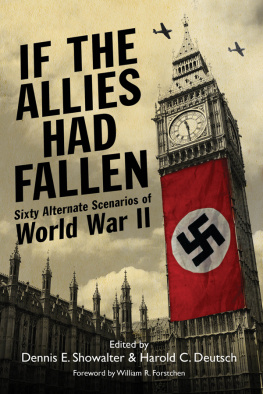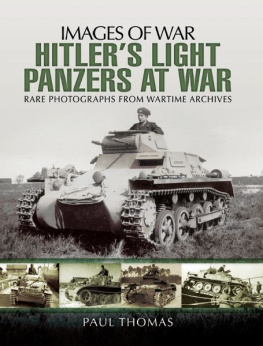Table of Contents
GERMAN CAMPAIGN IN THE WEST, 1940
GERMAN INVASION OF SOVIET UNION, 1941-1942
CAMPAIGNS IN NORTH AFRICA
EASTERN FRONT, 1943-1944
THE EASTERN FRONT, 1944-1945
INTRODUCTION
THE GERMAN ARMY of World War II continues to attract reader attention. Academic studies and military analyses, general-reader narratives and coffee-table picture books, all jostle for places in book stores and on bookshelves. Central to history and myth alike are the armored forces: the tanks and assault guns, the motorized infantry, and the supporting arms of the panzer and panzer grenadier divisions of the army and the Waffen SS. They were the heart of the armys fighting power and the core of its identity from the first days of victory in 1939 until the Third Reichs downfall in 1945.
The panzers have inspired a correspondingly rich literature. Works on doctrine, tactics, and equipment stand alongside studies of the panzers place in the German way of war and the history of war in the twentieth century. In darker contexts scholars present the panzers contributions to an ethic of fear and force that permeated Germany and its army before the rise of National Socialism transformed apocalyptic ideology into genocidal reality.
General, comprehensive discussions of Hitlers panzers have been understandably lacking. This book puts panzers at the center of three interfacing narratives. It presents the panzers contributions to the development of mechanized war and armor technology, their influence on the role of the army in German culture and society, and their role in the Third Reichs conduct of World War IImilitarily and morally.
The massive body of printed and archival sources available on each of these subjects can provide a multiple-entry footnote for every paragraph and for many individual sentences. I have appealed to reader-friendliness, eschewing a reference apparatus in favor of occasionally naming someone whose contribution to a particular issue demands acknowledgment. For simplicitys sake I have taken several other shortcuts as well. German ranks are given in American equivalentsincluding the mouth-filling titles of the Waffen SS. I reduce to a minimum the italicization of already complex German vehicle and weapons designations. All units of all armies follow the same terminology unless otherwise noted. Thus British or French armored units titled squadrons and regiments usually become companies and battalions.
The consistent use of approximately and about when giving vehicle strengths in particular reflects the fact that those numbers often varied widely, literally from day to day, given the effectiveness of the workshops and recovery crews. Exact statistics are correspondingly likely to misleadwhich was not infrequently the intention of compilers seeking to increase their inventory by exaggerating shortages.
This is a story as much as a history. It is shaped by research and by four decades worth of memories and anecdotes acquired from listening to the men who were there on both sides. It addresses deeds and behaviors that defy conventional explanations, positive and negative. In the kaleidoscope that was the Third Reich, the same institutions, the same persons, the same man, could show a near-random set of faces. Which were masks and which realities? Throughout this project I have sought counsel from another soldier, who asks that when his story is told, nothing extenuate, nor set down aught in malice. In telling the tale of Hitlers panzers, there are worse mentors than Othello.
Authors acknowledgments are tending to match those of the Academy Awards in length and fulsomeness. Without intending to slight anyone, I thank the students of Colorado College, who after over forty years keep me having too much fun to retire. And I thank especially the office staff of the history department: Sandy Papuga and Joanna Popiel. The book is dedicated to them, for more reasons than they know.
CHAPTER ONE
BEGINNINGS
SEPTEMBER 15, 1916, began as a routine day for the German infantrymen in the forward trenches around Flers on the Sommeas routine as any day was likely to be after two and a half months of vicious, close-gripped fighting that bled divisions white and reduced battalions to the strength of companies. True, an occasional rumble of engines had been audible across the line. But the British had more trucks than the Kaisers army, and were more willing to risk them to bring up ammunition and carry back wounded. True, there had been occasional gossip of something new up Tommys sleeve: of armored land cruisers impervious to anything less than a six-inch shell. But rumorsScheisshausparolen in Landser speakwere endemic on the Western Front. Then a forest of guns opened up in a ceaseless, rolling thunder, the few remaining survivors... fight on until the British flood overwhelms them, consumes them, and passes on.... An extraordinary number of men. And there, between them, spewing death, unearthly monsters: the first British tanks.
I
IMPROVISED AND POORLY coordinated, the British attack soon collapsed in the usual welter of blood and confusion. But for the first time on the Western Front, certainly the first time on the Somme, the heaviest losses were suffered by the defenders. Reactions varied widely. Some men panicked; others fought to a finish. But the 14th Bavarian Infantry, for example, tallied more than 1,600 casualties. Almost half were missing, and most of them were prisoners. That was an unheard-of ratio in an army that still prided itself on its fighting spirit. But the 14th was one of the regiments hit on the head by the tanks.
Shock rolled uphill. The enemy, one staff officer recorded, employed new engines of war, as cruel as effective.... It is necessary to take whatever methods are possible to counteract them. From the Allied perspective, the impact of tanks on the Great War is generally recognized. The cottage industry among scholars of the British learning curve, with descriptions of proto-mechanized war pitted against accounts of a semi-mobile final offensive based on combined arms and improved communications, recognizes the centrality of armor for both interpretations. French accounts are structured by Marshal Philippe Petains judgment that, in the wake of the frontline mutinies of 1917, it was necessary to wait for the Americans and the tanks. Certainly it was the tanks, the light Renault FT-17s, that carried the exhausted French infantry forward in the months before the armistice. Erich Ludendorff, a general in a position to know, declared after the war that Germany had been defeated not by Marshal Foch but by General Tank.


